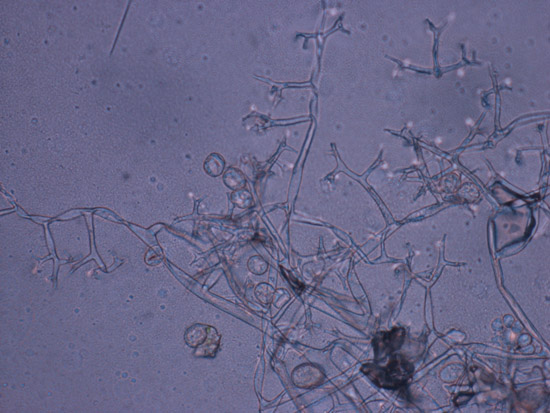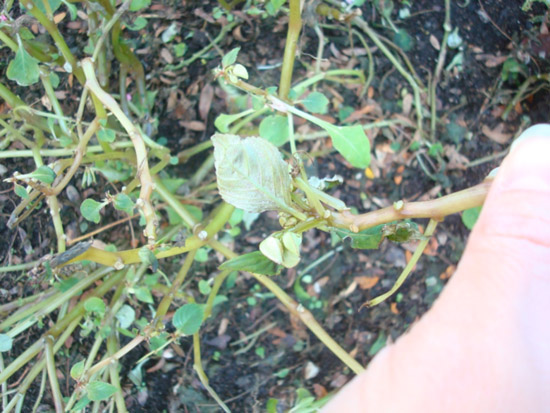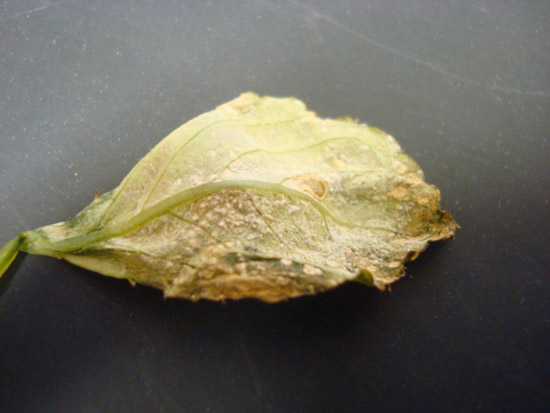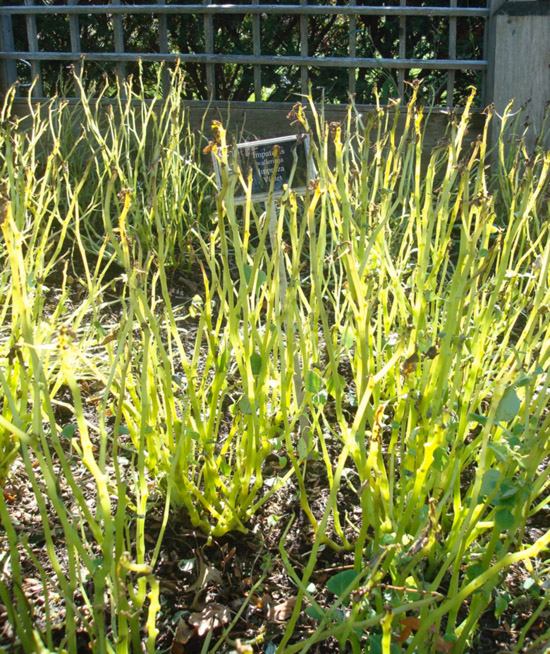Issue 3, May 7, 2012
Watch out for Impatiens Downy Mildew
In October, 2011, there were several reports of impatiens downy mildew (IDM) on garden impatiens (Impatiens walleriana). This disease was first reported in the U.S. in 1942, but late last season was confirmed on impatiens in coastal southern California, northeastern Illinois, northern Indiana, Cape Cod in Massachusetts, Long Island and upstate New York.
The plant pathogen that causes IDM is an oomycete and is spreads by oospores as seen below.

Impatiens downy mildew oospores, picture taken by Stephanie Porter.
The IDM pathogen is favored by wet foliage, cool temperatures (especially at night), and moist air conditions. Impatiens that are planted densely and in heavy shade are more at risk to be infected by this disease. In addition, impatiens that are watered by overhead sprinklers or stay wet for extended periods will be more prone for infection of impatiens downy mildew during favorable conditions.
Symptoms of IDM have been described as: "yellowish or pale-green foliage, downward curled leaves, leaf distortion, white to light-gray fuzz on leaf undersides, new leaves that are small or discolored (yellow or pale green), flowers buds fail to form, and stunted growth". After impatiens have been infected with this disease, defoliation of leaves can occur.

Impatiens infected with impatiens downy mildew, picture taken by Stephanie Porter.

White to gray fungal growth of impatiens downy mildew on the underside of an impatiens leaf, Picture taken by Stephanie Porter

Impatiens leaf defoliation caused by infection of impatiens downy mildew, picture taken by Stephanie Porter
If you think that you experienced this disease in your garden, there are no worries of it infecting other plants. However, it is very important that you remove and destroy infected plants. There is still a chance that this disease pathogen could overwinter and infect impatiens the following year. New Guinea impatiens are resistant to IDM and can be planted in an infected area. If planting impatiens this year, choose open, sunny areas. Keep a careful watch on impatiens to catch this disease in the early stages and remove infected plants immediately! Fungicides can provide some protection, but will not protect impatiens for the entire season. (Stephanie Porter)
Author:
Stephanie Porter